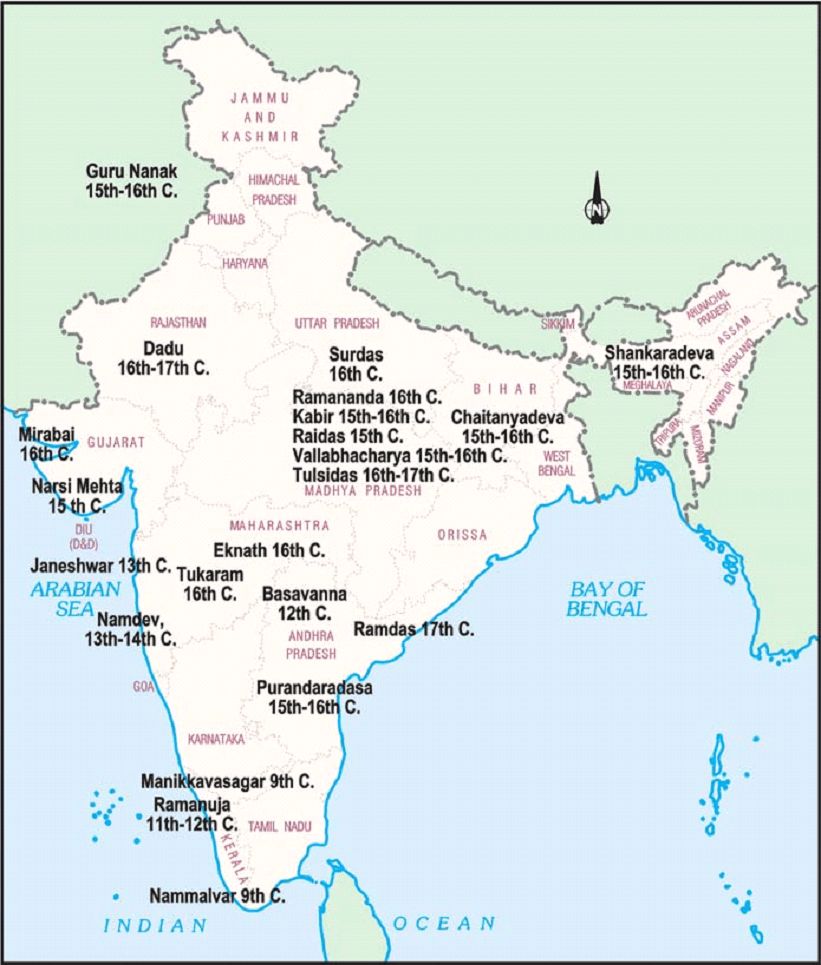- Books Name
- Social Science Book
- Publication
- Cognizance Publication
- Course
- CBSE Class 7
- Subject
- Social Science
Social order
Nathpanthis, Siddhas and Yogis

Number of religious groups that emerged during this period criticise the rituals and other aspects of conventional religion and the social order, using simple logical arguments.Among them were Nathpanthis, Siddhacharas and Yogis.They advocated renunciation of the world. To them, the path to salvation lay in meditation on the formless, ultimate reality, and the realisation of oneness.To achieve this, they advocated intense training of the mind and body through practices of yogasana, breathing exercises and meditation. These groups became particularly popular among low castes.
Islam and Sufism
Sufis and Muslim mystics who rejected outward religiousity and emphasised love and devotion to God and compassion towards all fellow human beings.Islam propagated strict monotheism or submission to one God.In the eighth and ninth centuries religious scholars developed different aspects of the Holy Law and theology of Islam. The sufis often rejected the elaborate rituals and codes of behaviour demanded by Muslim religious scholars. Like the saint-poets, the Sufis to composed poems expressing their feelings, and a rich literature in prose, including anecdotes and fables.Among the great Sufis of Central Asia were Ghazzali, Rumi and Sadi. Like the Nathpanthis ,Siddhas and Yogis, the Sufis do believe that the heart can be trained to look at the world in a different way. They developed elaborated method of training using zikr(chanting of a name of sacred formula), contemplation, sama(singing),raqs(dancing), discussion of parables, breath control, etc. Under the guidance of a master or pir.Thus emerged the silsilas, a spiritual genealogy of Sufi teachers each following a slightly different method (tariqa) of instruction and ritual practice. A large number of Sufis from Central Asia settled in Hindustan from the eleventh century onwards.Silsila was among the most influential orders. It had a long line of teachers like Khwaja Muinuddin Chishti of Ajmer, Qutubuddin Bakhtiar Kaki of Delhi, Baba Farid of Punjab, Khwaja Nizamuddin Auliya of Delhi, and Bandanawaz Gisudaraz of Gulbarga.
The Sufi masters held their assemblies in their khanqahs or hospices. Devotees of all description, including members of the royalty, nobility and ordinary people, flocked to these Khanqahs. They discussed spiritual matters, sort the blessings of the saint in solving their problems or attended the music and dance sessions. The Tomb or dargah of a Sufi saint, became a place of pilgrimage to which thousands of people of all faiths thronged.
In Kashmir, the Rishi order of Sufism flourished in the 15th and 16th centuries. This order was established by Sheikh Nuruddin Wali also known as Nund Rishi, or had a deep impact on the life of people in Kashmir. A number of shrines dedicated to Rishi saint can be found in many parts of Kashmir.

 Cognizance Publication
Cognizance Publication
